The HOPE team is testing the buoy at the Mobilis factory (Agen)
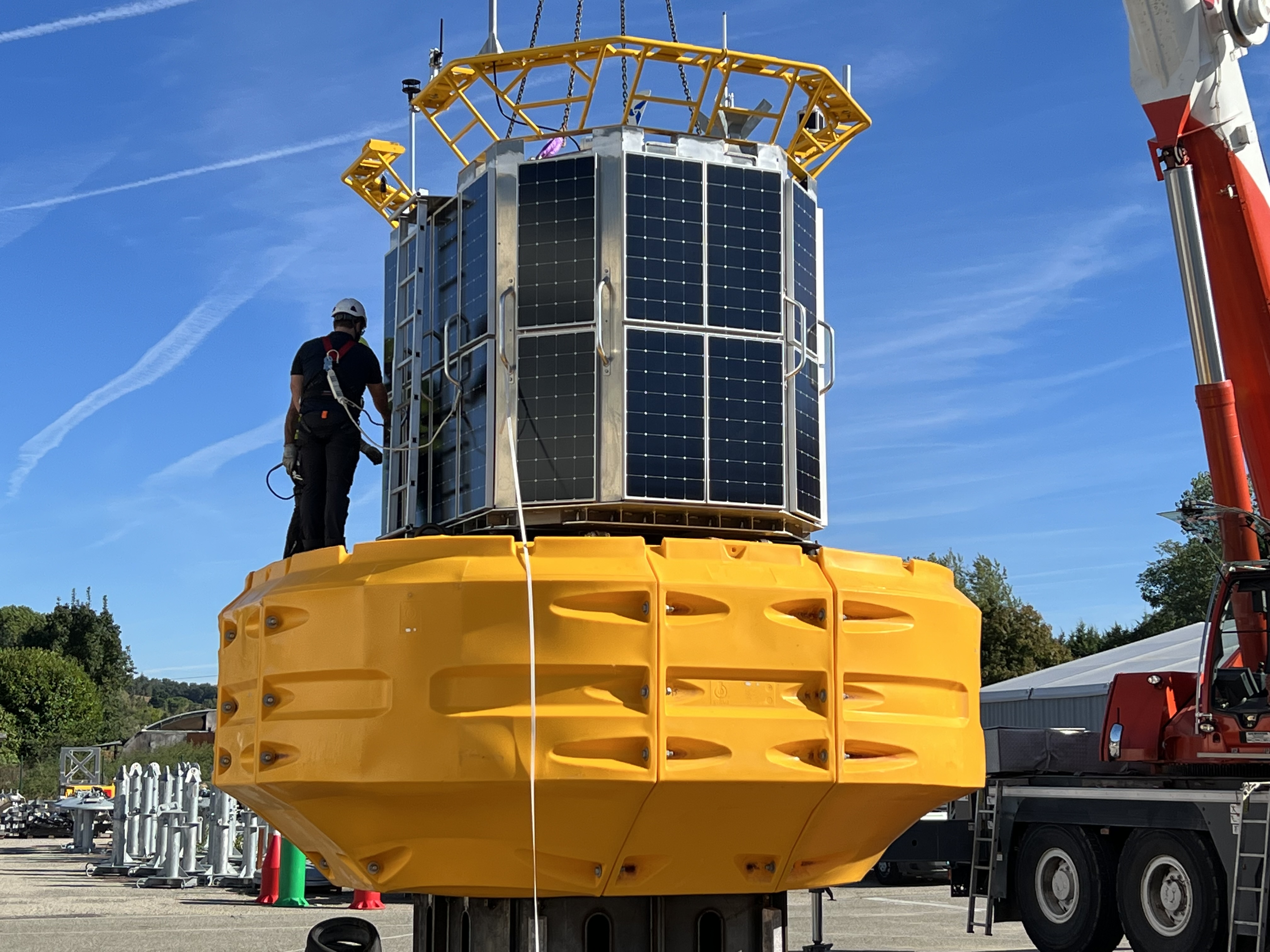
After 1 year to draw up the specifications and 6 months of construction, the smart buoy at the heart of the HOPE project is ready! The HOPE team in charge of the buoy (Jordan, Jean-Michel and Sophie) were heavily involved alongside Mobilis to integrate the sensors on the buoy and simulate dives to the ocean depths... at the factory, before its deployment in the South Pacific in early 2024.
French version below
First we assembled the buoy, which can be disassembled and transported by sea container to any place in the world! Mind you, you'll need 3 40-foot containers to transport it - enough to move 3 houses!
Then we tested the winch that will lower a sensor-equipped cage from the buoy to the depths. Our objective: to perform 0-100 m profiles every 4 hours for 2 consecutive years.
On the menu on the cage: a CTD probe including measurement of temperature, salinity, O2, PAR, chlorophyll a, fDOM, backscatter, turbidity. It will transmit its data via wifi to the buoy's datalogger, which will then transmit the data to us ashore in real time. The cage also features a nitrate sensor, a phosphate sensor and an UVP (Underwater Vision Profiler) that will characterize and quantify large particles (>100 µm).
Inside the buoy, a veritable laboratory awaits us. It will house a flow cytometer that will characterize the planktonic ecosystem (including our diazotrophs) every 4 hours, and a robot that will automatically sample DNA and RNA (and fix them) every day in the middle of the Pacific... an oceanographer's dream!
Here's some pictures of the Buoy assembly at the Mobilis factory. All that's left is to test all this in the Pacific in a few weeks' time... more in the next news!
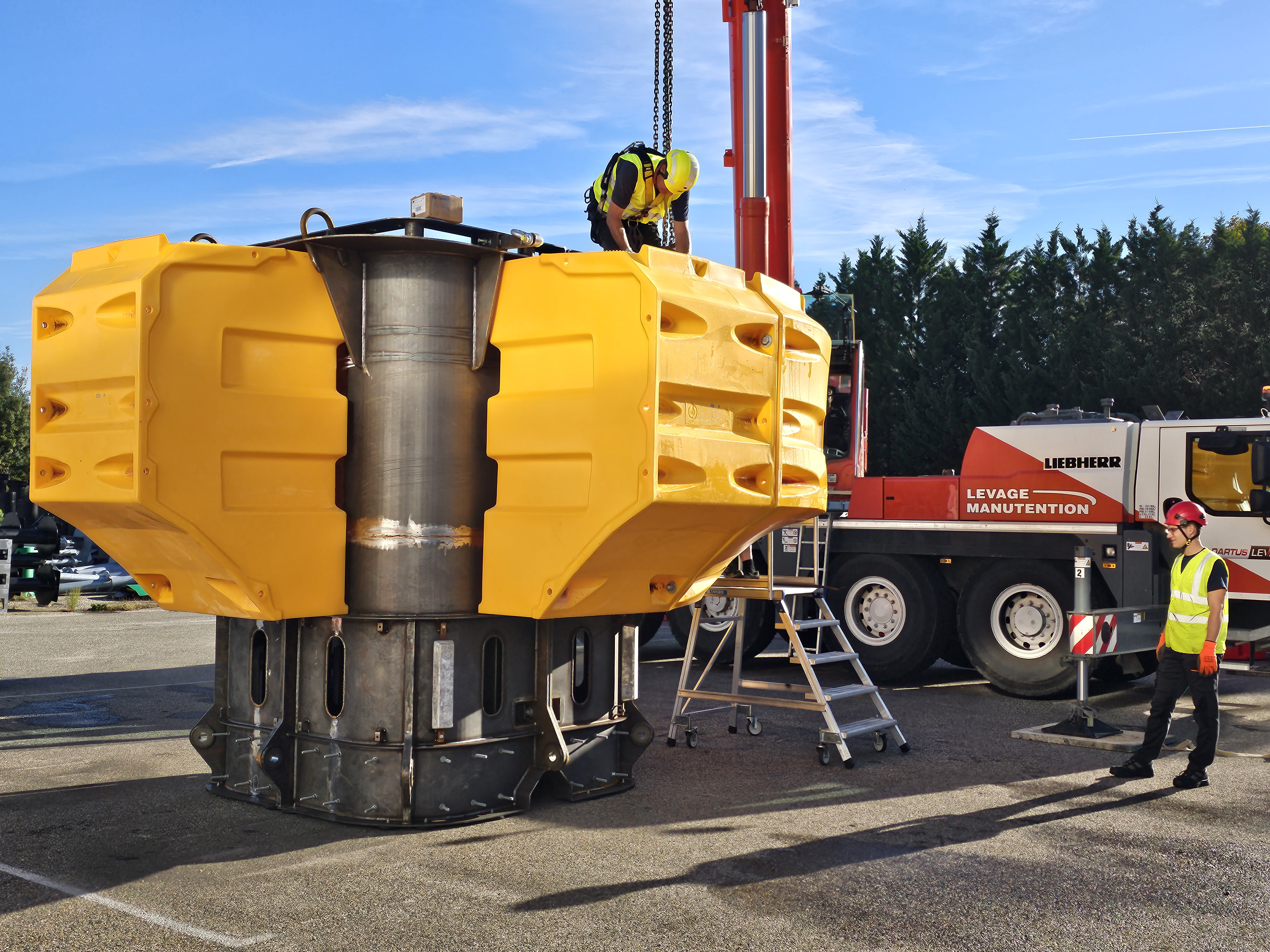
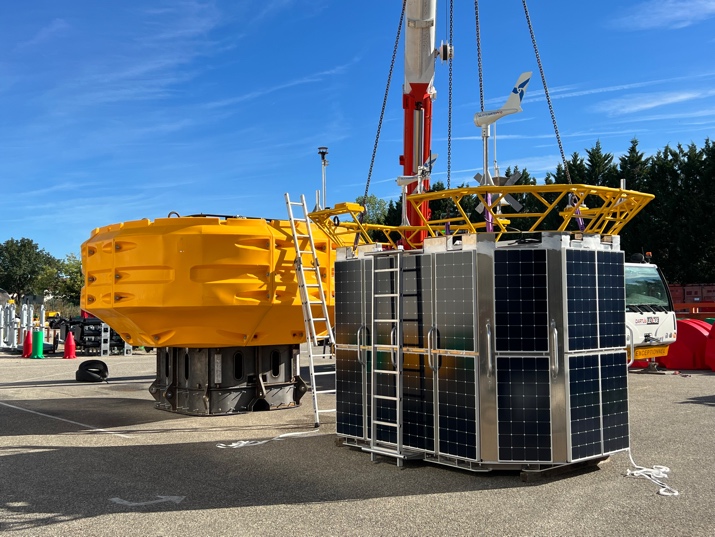
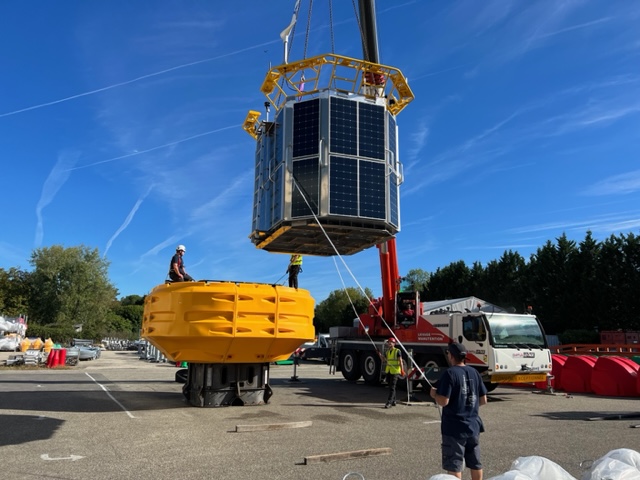
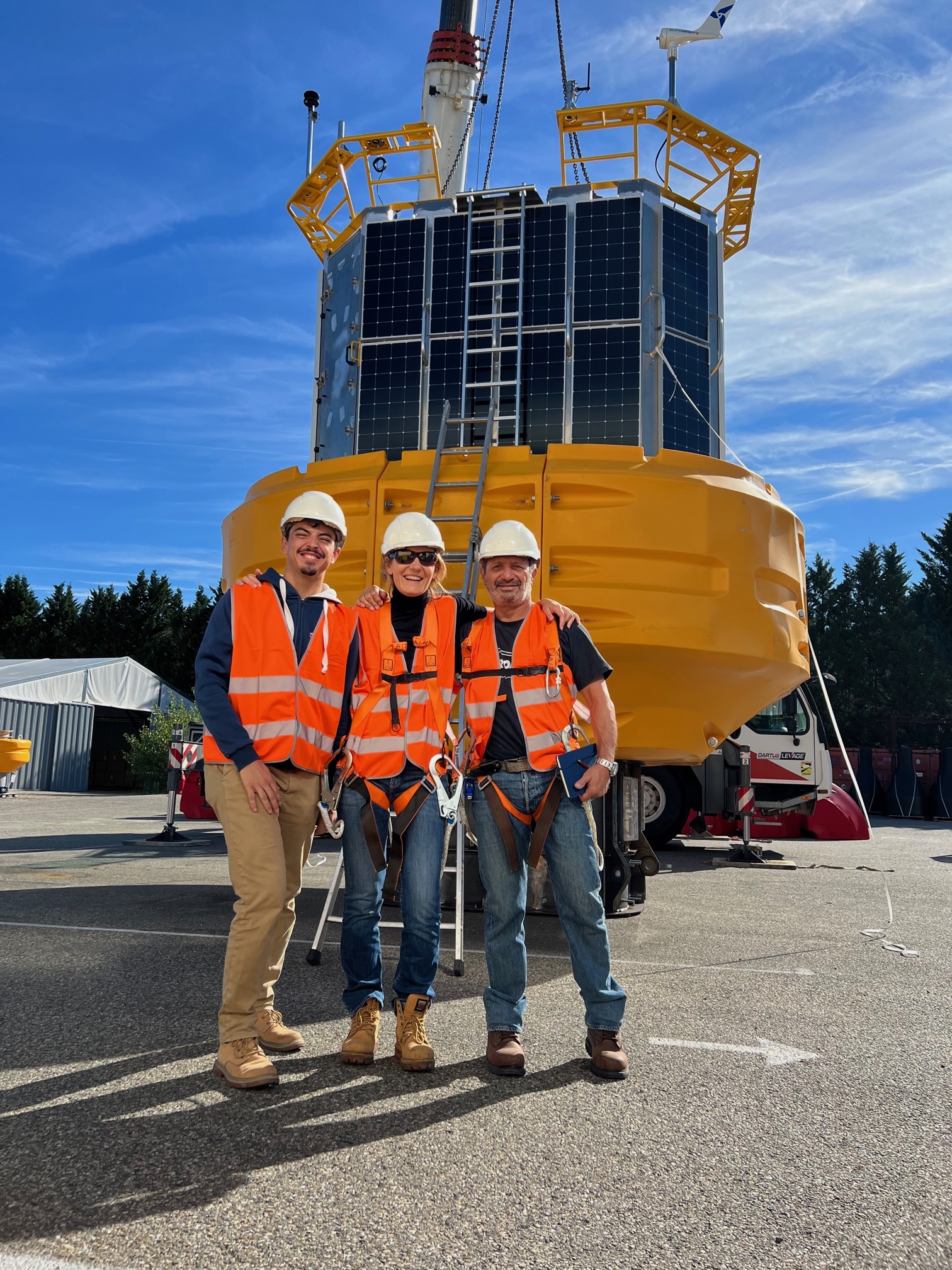
French version:
Après 1 an d'élaboration du cahier des charges et 6 mois de construction, la bouée intelligente au cœur du projet HOPE est prête ! L'équipe HOPE en charge de la bouée (Jordan, Jean-Michel et Sophie) s'est fortement impliquée aux côtés de Mobilis pour intégrer les capteurs sur la bouée et simuler des plongées dans les profondeurs océaniques... à l'usine, avant son déploiement dans le Pacifique Sud début 2024.
Nous avons d'abord assemblé la bouée, qui peut être démontée et transportée par conteneur maritime partout dans le monde ! Attention, il faudra 3 conteneurs de 40 pieds pour la transporter - de quoi déménager 3 maisons ! Nous avons ensuite testé le treuil qui permettra de descendre une cage équipée de capteurs de la bouée vers les profondeurs. Notre objectif : réaliser des profils de 0 à 100 m toutes les 4 heures pendant 2 années consécutives.
Au menu sur la cage : une bathysonde CTD, O2, PAR, chlorophylle a, fDOM, rétrodiffusion, turbidité. Elle transmettra ses données par wifi au datalogger de la bouée, qui nous les transmettra à terre en temps réel. La cage comporte également un capteur de nitrates, un capteur de phosphates et un UVP (Underwater Vision Profiler) qui caractérisera et quantifiera les grosses particules (>100 µm).
A l'intérieur de la bouée, un véritable laboratoire nous attend. Il abritera un cytomètre de flux qui caractérisera l'écosystème planctonique (dont nos diazotrophes) toutes les 4 heures, et un robot qui prélèvera automatiquement de l'ADN et de l'ARN (et les fixera) tous les jours au milieu du Pacifique... un rêve d'océanographe ! Il ne reste plus qu'à tester tout cela dans le Pacifique dans quelques semaines... plus d'infos dans les prochaines news !